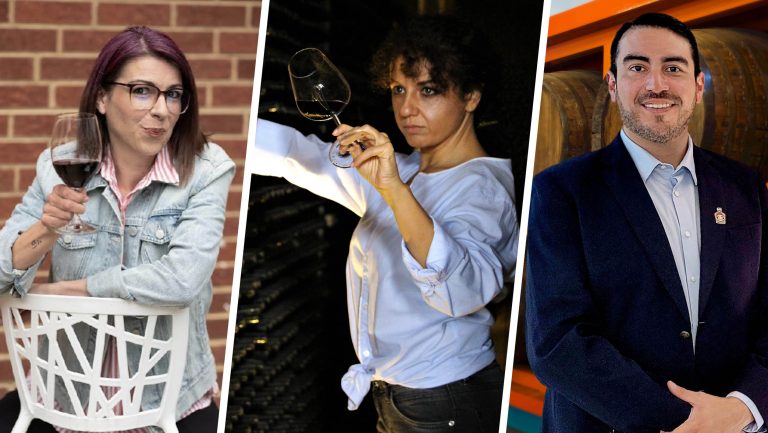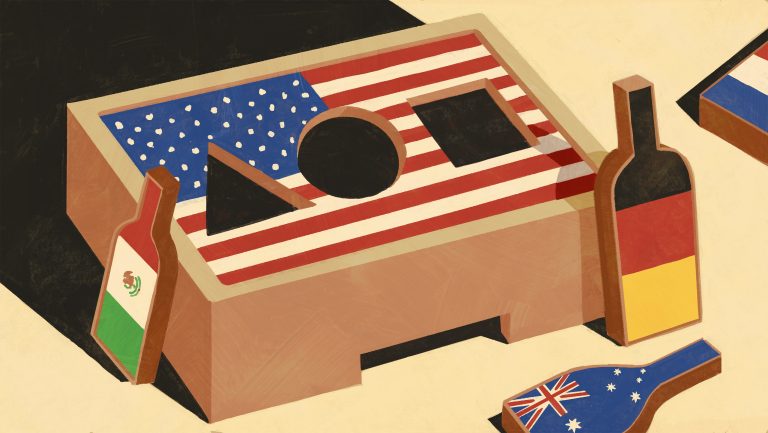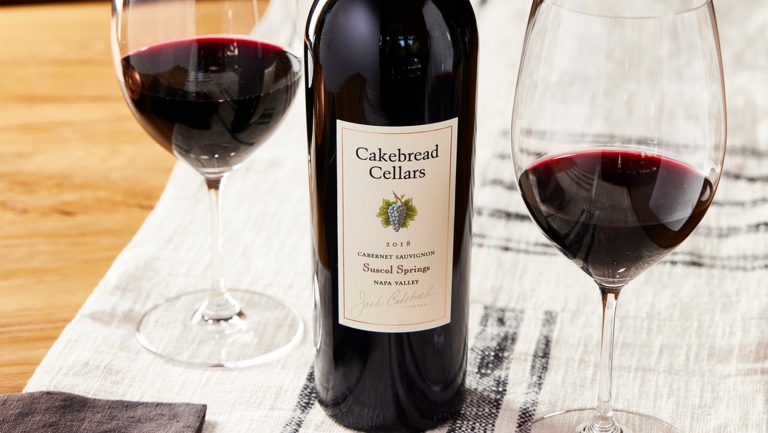While the United States is one of the most-attractive consumer markets for wine and spirits producers worldwide, winegrowers and distillers outside the U.S. have found it a frustrating and competitive market in which to enter and conduct business. The struggles are manifold, but, primarily, it’s a question of finding the right importer or distributor to help them navigate the system.
According to the U.S. Department of Agriculture, in 2021 the U.S. imported 456 million gallons of wine, about 17 percent of the world’s total wine imports, far ahead of the UK (almost 13 percent) and Germany (8.4 percent). In data released by the Wine Institute, last year Americans collectively consumed 1.1 billion gallons of all categories of wine.
The spirits side is equally enticing. According to the Distilled Spirits Council of the United States, 2021 imports of spirits into the U.S. accounted for more than 243 million gallons, with the spirits sector experiencing their fastest growth in two decades.

Don’t miss the latest drinks industry news and insights. Sign up for our award-winning newsletters and get insider intel, resources, and trends delivered to your inbox every week.
“We’re a new company, born in 2019,” says Ruggero Raymo, one of three principals who founded Portofino Dry Gin on the Ligurian Coast of northwest Italy. “Our plan was for year one to be in Italy; year two, expand into Europe; and year three, to go into North America,” he says. On schedule, Portofino landed in New York in September 2021, Raymo says, “because we wanted to try one market to better understand the U.S.” Now it has expanded into six other states through its U.S. importer, Artisanal Cellars.
How did the two come together? “They found us!” says Raymo. “Fortunately, they were successful wine importers who were looking to expand into spirits and had heard about us.” But most would-be newcomers aren’t so lucky. In fact, many foreign producers selling in the U.S. had an unsuccessful partnership with an importer before finding the right one. For producers who have successfully landed stateside, the path to success started with smart planning, realistic expectations, and a lot of patience.
What American Importers Want
“We are looking for someone who’s located in a world-class region and not too niche; is family-owned with a long-term view; avoids any redundancy with what’s in our portfolio; and has something that will impress us—the wow factor,” says Brennan Anderson, the vice president of marketing for Folio Fine Wine Partners, a wish list most other importers would second. “They should also share a similar vision of what a partnership looks like.”
Lexi Jones, the cofounder and portfolio director of Amlière Imports, agrees. “The wine first and foremost has to be delicious,” says Jones. “But a close second when looking at criteria is production size. I like to support small wineries and give them a platform to showcase their wines.” Another small importer, Jesse Balsimo of Truvino, emphasizes realistic planning. “It is highly competitive here, and lacking a proper long-term plan with long-term pricing consistency is asking for failure,” he says.

Bill Terlato, the CEO of Terlato Wine Group, emphasizes that, “Unless it is a high-prestige winery, it needs to have high growth potential and the ability to scale up.” Scott Ades, the president of Dalla Terra Winery Direct, adds, “It helps, secondarily, to have a person who speaks good English, has good administration, and has a good website.”
Finally, the producer’s location can be a boon or a barrier, says producer consultant Amy Troutmiller. “European producers have a competitive edge in getting into the U.S. because there’s more container traffic to the U.S. than coming in from other places, such as South Africa,” she says.
Finding the Right Way to Connect
Wineries and distilleries looking for partners often cite frustration in trying to land that first meeting. In response, importers stress the importance of networking and being prepared when the opportunity presents itself.
Importer Terry Theise says he finds candidates for his specialized portfolio “as a rule, through word of mouth, recommendations from other growers, or from the press. All of us importers have our ears to the ground at all times.” But, he says, he seldom visits trade show booths of producers looking to gain the attention of importers, media, or other influencers. Terlato, however, sees booth browsing as part of long-term planning. “I think it’s a good idea to use trade shows to identify potential future brands in case the need later arises.” Plus, producers can make contacts at trade shows just by attending, even without having a booth.
In addition to networking and booths, Troutmiller represents a third option. She cofounded Swig Partners not only to serve as an agent or broker between producers, importers, and distributors, but also to map out for foreign winegrowers how the U.S.’s three-tier system and its 50-state variations work.
“Trade shows cost a lot of money,” says Troutmiller, about the same as her typical $3,500 fee for advising and linking wine or spirits clients with potential importers. “Plus, if they get the wrong importer, it’s much harder and very costly to start over again if things don’t work out.”
Finally, cold calling—making contact with an importer by phone, email, or letter without first having an introduction—is a long shot. Most importers interviewed for this story struggled to remember a cold call that successfully got their attention.
And, as Raymo discovered with Portofino Dry Gin, it helps to be ready in case destiny calls. As Terlato says, “Sometimes, we target a region that isn’t well-represented in our portfolio, and then target brands to talk with.”
How to Successfully Portray a Producer’s Value
Ades advises distilleries and wineries who decide to cold call not to flood importers with information. “Tell [them] who you are, your history, and why your wines should be of interest—and stop there!” If the producer has whetted the importer’s interest, he adds, the importer will initiate a dialogue.
For starters, consultant Troutmiller says, “we ask producers to first determine how much of their production can be allocated to the U.S., then how much can they grow it year after year, because the potential importer will want to know at some point.”
Also, producers should study how importers they target present their portfolios on their websites and adapt their presentation accordingly. Theise says producers often mistakenly “write a pro-forma pitch based on what works in their country but not in the U.S. They’ll cite awards or scores, which mean nothing to me.”
But nothing beats an invite to an importer for an in-person visit. Jones recalls that during the height of the pandemic, receiving wine samples from producers was a good conversation starter, “but there is nothing quite like seeing the vineyards in person and being able to really paint a picture of the sense of place the wine gives.”
What Producers Should Look For in an Importer
Teresa Bruno, the owner of Petilia winery, however, had the opposite need. In 1999, she and her husband lost their grape-growing contract to sell grapes from their 10-acre estate near Naples and decided to make the wine themselves. “Roberto immediately sold his car, while I used my dowry, and, together with other savings, the adventure of winemaking and bottling humbly began in an adapted basement.” A small importer offered to help. “However, as our company continued to grow, the North American market was absorbing too little [of our product] compared to our needs,” she says, and their new, larger importer, Dark Star, is more aggressively doing that.

Several importers say potential producers place too much emphasis on first entering the New York market. “It’s a great place to be, but it’s competitive and saturated with products,” says Troutmiller. “They might do better in a place like, say Missouri, or any growing market, where they can get more attention with less competition. And eventually they might get to New York on better terms.”
Securing the Partnership
Once talks begin with a potential importer, producers shouldn’t expect a quick resolution. Terlato says he might visit a prospective winery three or four times before a deal is complete. Ades agrees. “We take a long time—one to three years of interest,” he says. “We see ourselves as getting married, and we don’t like divorces.” Smaller importers, however, may commit to the partnership within a half year.
Also, expect a lot of marketing advice during the negotiation. “Our new importer had some input into our label design,” says Bruno. Raymo adds, “We had to change bottle size from Europe’s 500 milliliter, so we decided on 750, a better size for the back bar, which is where we want to be.” Additionally, he notes, Artisanal Cellars “insisted on a ‘naked bottle’ instead of the packaged bottle we had in Europe—more American in style.” And importers will certainly have input on determining the selling price.
Terlato cites another common misperception new producers have about exporting to the U.S.—that all of their products will be included. “It’s hard to approach a distributor with a laundry list of products,” he says. “First gain market share, then add other labels.”
Even established exporters are not exempt from importer tinkering. Terlato points out he had long worked with French producer Bruno Paillard when he agreed to take on Paillard’s Provencal rosé, Les Sarrins. “The packaging was suboptimal, and we suggested a different bottle,” says Terlato, admitting suggesting such changes is “like telling someone their kid has shabby clothes.”
Building a Successful Relationship
While most importers cover shipping expenses once bottles leave the distillery or winery, marketing and promotional expenses will need negotiating. “We look for a sharing of ad and PR costs, usually 50/50,” says Terlato. “That way, we both have skin in the game and an alignment of interests.” He also loves to arrange visits by producers to the U.S., as “it’s the winemakers that people really want to see.”
Anderson notes today’s importer-producer partnership is one of sharing and transparency. “The old way was that the wine was considered sold when it left the winery, and importers were closed to sharing information,” he says. “That’s now outdated. We collaborate as much as possible and see ourselves as an extension of our producers’ global marketing.”
There should also be discussions concerning best strategies and tactics. For example, Raymo says he would rather spend money on consumer events to support Portofino instead of a sampling program.
Finally, producers who are new, or starting anew, in the U.S. should be prepared for potential success. The owners of Botran, a Guatemalan rum distiller, decided they needed a new strategy in the U.S. market, which, for them, was mainly Florida, and left the market for a year. “In 2020, we did not sell one case in the U.S.,” says Ivan Valdez, the senior global brand manager. But with their advertising and promotional spend linked to sales volume, their new importer Mexcor International quickly got busy landing Botran gin in nationwide retailers such as Total Wine and putting a huge demand on production. “Fortunately,” says Valdez, “it’s easier for a distiller to scale up production than if we were a winery.”

Dispatch
Sign up for our award-winning newsletter
Don’t miss the latest drinks industry news and insights—delivered to your inbox every week.
Roger Morris is a Delaware-based writer who for the past 20 years has contributed articles on wine, food, and popular culture to about a dozen publications in the U.S. and Europe. Currently, he writes for World of Fine Wine, Drinks Business, Meininger’s, VinePair, Wine & Spirits, and Global Drinks Intel, among others. In prior years, he taught writing at Arizona State University and the University of Delaware and was an industry marketing executive.






